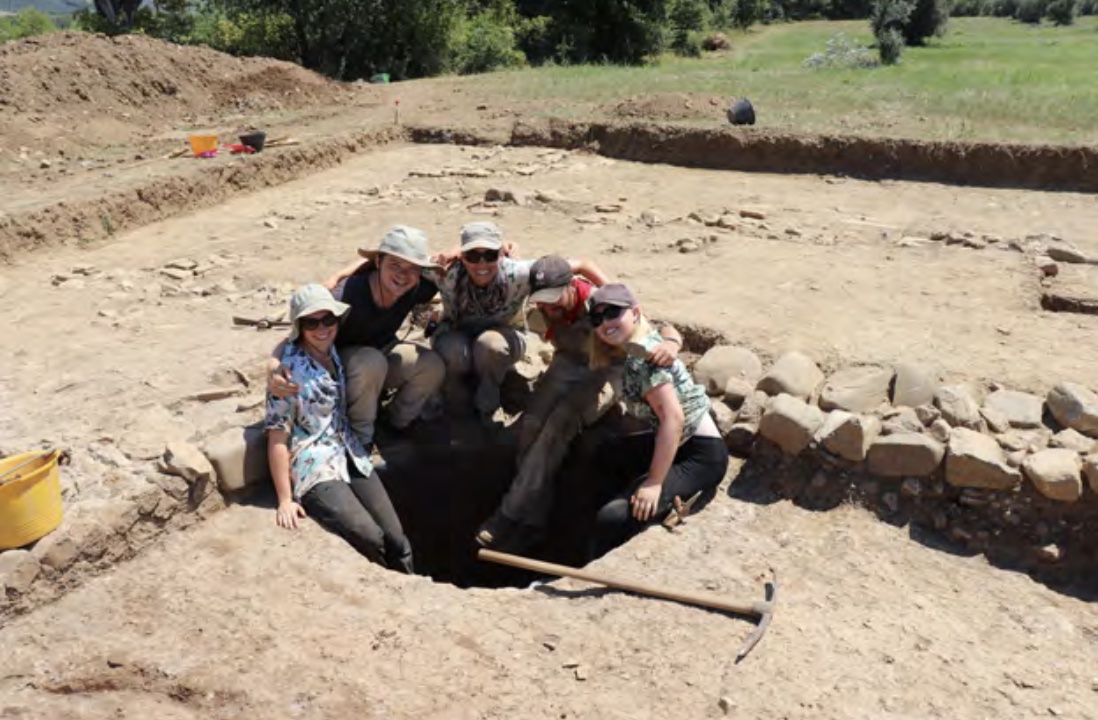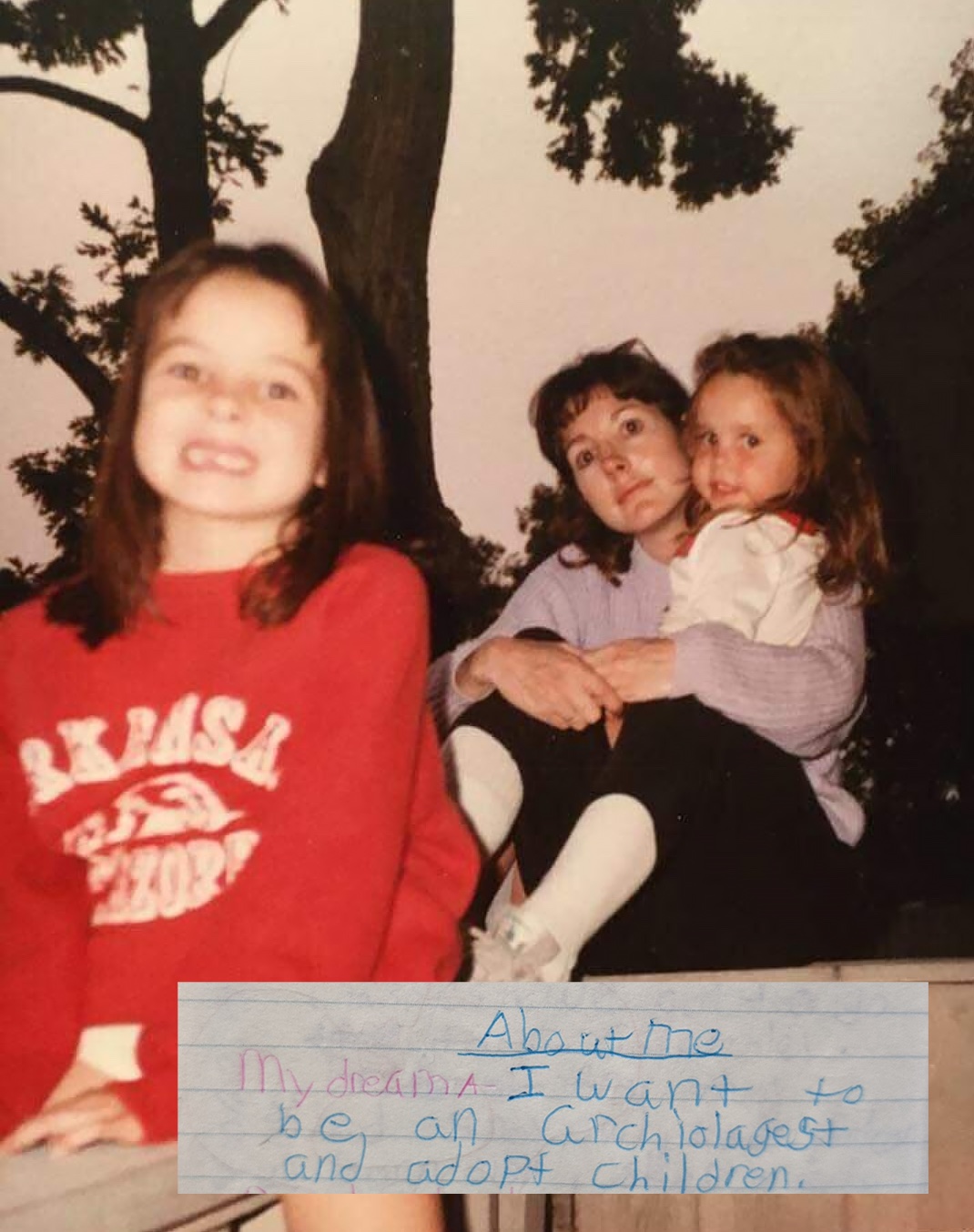Dr. Vennarucci Awarded 2021 Fulbright Master Teacher Award

Dr. Vennarucci (center) with students at an archaeological dig site.
Dr. Rhodora Vennarucci, Assistant Professor of Classics in the Department of World Languages, Literatures & Cultures, was awarded the Fulbright Master Teacher Award in spring 2021. Every year, Fulbright College honors up to three outstanding instructors in the areas of humanities and fine arts, natural sciences, and social sciences.
Nominees for the Master Teacher award must present a comprehensive application that includes a letter of nomination, peer, student and course evaluations, and extensive documentation of the nominee’s teaching activities.
Dr. Vennarucci was nominated by Dr. Daniel Levine, section head of the Classics department and University Professor.
"I do not know of other professors whose teaching reach is so broad, and so solid. I won this award many years ago, but if I had been competing for it against a nomination for the polymath Dr. Vennarucci, I would have come in second. She’s a top-rate teacher, and in a class of her own."
— Dr. Daniel Levine, from Dr. Vennarucci's Master Teacher application
Her Story
A University of Michigan and University of Buffalo alumna, Dr. Vennarucci moved to Northwest Arkansas in 2013 while finishing her dissertation for her doctorate in Roman Archaeology from the University of Buffalo. Initially, she and her husband planned on staying in Fayetteville temporarily; she was able to secure a position teaching Latin, and it wasn’t long before she found herself “falling in love” with Classics.
“I’ve been here for eight years in different positions, but the Classics program feels like home.”
Dr. Vennarucci’s interdisciplinary and diverse areas of scholarship and research stem from her interest in archaeology, which began at a young age. “I’ve wanted to be an archaeologist since I was eight,” Vennarucci said. “I have a diary entry from the second grade saying, ‘I want to be an archaeologist’—totally misspelled of course.”
This interest was sparked by a family trip to Chicago. “My parents took me to the Field Museum in Chicago to see the Ancient Egypt Exhibit that had recently opened," Vennarucci recalled. "It absolutely wowed me, and that sparked my interest in archaeology, along with my dad’s interest in history. For me, the fun of the discovery has never left."

Dr. Vennarucci (front) as a child with her mother, Dr. Lanette Grate, and sister, Keturah (nee Grate) Finch.
In (and out of) The Classroom

Dr. Vennarucci (6th from the left) and students in the remains of the Greek theatre (late 4th/early 3rd c BCE) in Segesta, Sicily.
Her studies in classical archaeology eventually led Dr. Vennarucci to learn Latin and ancient Greek, which ignited a love of language. “I see the value in blending those two things—archaeology and language. The intersection between language and materiality is culture. I specifically look at it in epigraphy, and I integrate that into my language instruction,” Vennarucci said. “In fact, I’m currently writing an article on the importance of multi-vocality in the Latin classroom and how, through epigraphy and understanding Latin within a physical context, we can include diverse voices that are not typically heard in the study of Classics. I was able to include these kinds of projects in my application for the Master Teacher Award.”
"My students have added to my own understanding and perspective of the material through their observations and combining their own interests with the course.”
Alongside her own research and scholarship, Dr. Vennarucci identified how her approach to instruction has changed over time, and the impact her students have had on her. “I’ve been able to let go of the traditional classroom hierarchy a little bit,” Dr. Vennarucci said. “I try to create space for my students to lead discussions and exchange ideas, as well as pursue their interests through the course material. It’s a collaborative process, and the success of a course is not based solely on me or my students; it’s a synergy between professor and student."
Looking To The Future
Currently, Dr. Vennarucci is working on collaborative virtual reality projects with Dr. David Frederick of the Tesseract Center, which began with the launch of the Virtual Pompeii Project. These projects immerse students in a virtual recreation of the city of Pompeii by use of virtual reality and game design. For example, the Virtual Roman Retail Project allows students to experience life as an ancient Roman—in this case, through reconstructed shops along the digital street.
“Broadly speaking, I think there has been a large digital turn in archaeology,” Dr. Vennarucci explained. “It’s accessible for students, and the research from the projects gets reintroduced in the classroom and our students are part of every step.”
"These new technologies, like recent virtual reality and game design technology, are gradually becoming more accepted as important research tools and pedagogical tools."

